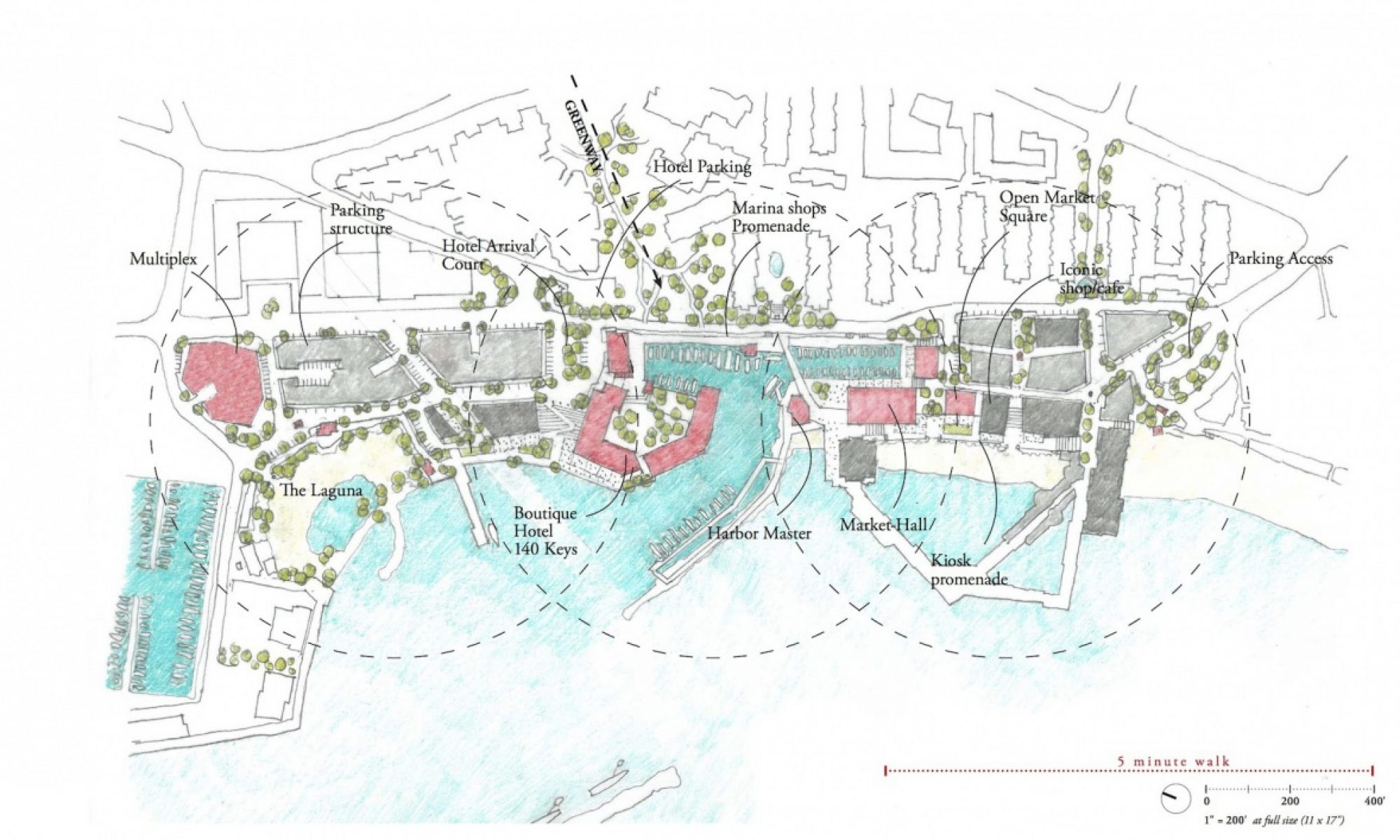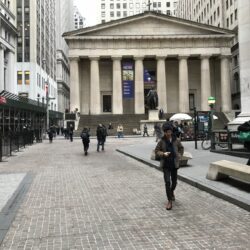I was invited to contribute a book chapter to a book developed by Profs. Reneta Lansiquot and Sean MacDonald on the application of High Impact Educational Practices to Interdisciplinary Teaching.
My chapter title is: Learning Places: Place-Based Learning in an Interdisciplinary Approach to Undergraduate Research
Book Title:
Interdisciplinary Team Teaching: A Collaborative Study of High-Impact Practices
The proposal was recently accepted by the publisher, Palgrave Macmillan. The peer-reviewers recommended the proposal be accepted “as it stands or after minor revisions.”
Email with Editor: Re: Book Proposal – Jason Montgomery
Acceptance Email Confirmation: Good news!Jason Montgomery copy
Chapter Proposal:
Learning Places: Place-Based Learning in an Interdisciplinary Approach to Undergraduate Research
Jason Montgomery
Higher education teaching is an ever-evolving practice that responds to changing student preparation and learning needs, the contemporary needs of business, industry, and the professions, research on teaching and practice, and the professional development of faculty. High-impact educational practices (HIEPs) outlined by the AAC&U give faculty a toolkit of specific practices that research identifies as having particular effectiveness in student engagement and learning in the 21st century. Included in this list of effective practices is undergraduate research, defined by the AAC&U as having the goal “to involve students with actively contested questions, empirical observation, cutting-edge technologies, and the sense of excitement that comes from working to answer important questions.” While this high-impact educational practice is most often associated with the sciences, it has wider applicability to undergraduate learning, where the methods of research can integrate strategies that further enhance student engagement and learning: place-based learning and interdisciplinary teaching. In this chapter, these two compelling approaches to higher education will be presented as a powerful, interwoven, and integrated approach to undergraduate research.
Place-based learning is an increasingly applied strategy in higher education to increase student engagement and to put the students in the role of generators of knowledge rather than passive recipients of knowledge. Interdisciplinary teaching is supported by research that identifies specific benefits to the students, including gaining insights from multiple perspectives and increasing the ability to integrate diverse concepts into a contextualized approach to analysis.
Both approaches to education are young in their development and evolution, and they require more exploration of applications and techniques. Faculty need more guidance on how to teach both in an interdisciplinary format and outside the classroom. Here, a specific course that does both will be presented as a case study of successful practices and pedagogical approaches that will help the reader to develop his or her own approach to one or both.
The course presented here is best described as a part of an urban studies curriculum, where primary source empirical research methods are explored using the city as the laboratory. Urban studies courses are increasingly important as the human population is in the midst of a remarkable transition, moving from rural settlements to cities such that within a 100-year period (1950-2050) the world population will flip from 2/3 rural to 2/3 urban, making the study of cities an increasingly critical component of education and research. In the general education and liberal-arts context, urban studies courses make the city, or more broadly human settlements, the starting point for a broad range of investigations where interdisciplinary teaching that makes use of place-based learning is a natural fit.
In the Learning Places interdisciplinary course at the New York City College of Technology, faculty from multiple disciplines are refining a place-based teaching methodology that is enriching undergraduate baccalaureate students with an additional set of tools for research and increasing knowledge of the city around them. The combination of place-based learning and interdisciplinary teaching in this course is not only impacting the student knowledge of the city, its complexity, and the myriad issues ripe for investigation, but also working towards critical general education goals for lifelong learning and information literacy.
This chapter will present specific place-based learning strategies and techniques. They will then be assessed for their impact on both the primary content knowledge and investigation skills, as well as general education skills and values, including their effectiveness at generating engagement and impacting the lifelong learning attitudes of the students. The relationship of place-based learning and experiential learning will be explored. Discussion will focus on place-based learning utilizing careful observation, observational drawing, and reflection as a critical active learning approach for undergraduate research. In particular, the interdisciplinary combination of the walking seminar paired with archival investigation will be introduced as a method for investigating the current and historic conditions of a place. The role of the site report will be discussed as a template to aid instructors’ adoption of the discussed techniques. Emphasis will be placed on the central contested question of how urban environments should change in the future, with the context for this question accommodating multiple perspectives including social justice, sustainability, preservation, housing, and urban design. Students will increase their understanding of the evolution and change of urban places as a central vehicle for assessing the complexity of the current conditions and anticipating the future impacts of the built environment on people and place.
While the course used here as a case study is focused on the city as the learning laboratory, the techniques outlined are applicable to other scales of human settlement that equally provide a rich laboratory for learning, including towns and villages in rural settings. While the world is rapidly urbanizing, the rural landscape is also going through significant change, and the future of these places is unclear. Ecological sustainability, economic development, and social concerns pertaining to the future of smaller scale towns and villages are potent topics for undergraduate research, and they are actively contested questions in the 21st century. In these places, the use of place-based learning strategies combined with interdisciplinary teaching are no less useful than the city. Overall these techniques offer a broad range of applicability that can be of service to faculty in a range of contexts seeking to apply the high-impact educational practice of undergraduate research.
1 KUH, GEORGE D. HIGH-IMPACT EDUCATIONAL PRACTICES. ASSOCIATION OF AMERICAN COLLEGES & UNIVERSITIES, 26 JULY 2018, WWW.AACU.ORG/LEAP/HIPS.
2 OUR URBANIZING WORLD. DEPARTMENT OF ECONOMIC AND SOCIAL AFFAIRS, UNITED NATIONS, 2014, WWW.UN.ORG/EN/ DEVELOPMENT/DESA/POPULATION/PUBLICATIONS/PDF/POPFACTS/POPFACTS_2014-3.PDF.
Draft Bibliography:
Angrosino, Michael, and Judith Rosenberg. 2011. “Observations on observation.” The Sage handbook of qualitative research 4:467-478.
Arnheim, Rudolf. 1969. Visual thinking. Berkeley,: University of California Press.
Arnheim, Rudolf. 1980. “A Plea for Visual Thinking.” Critical Inquiry 6 (3):489-497. doi: 10.1086/448061.
Boran, Sibel, and Barbara Comber. 2001. Critiquing Whole Language and Classroom Inquiry. WLU Series: ERIC.
Boyer, Ernest L. 1998. “The Boyer commission on educating undergraduates in the research university, reinventing undergraduate education: A blueprint for America’s research universities.” Stony Brook, NY 46.
Brew, Angela. 2002. The nature of research: Inquiry in academic contexts: Routledge.
Corwin, Lisa A, Mark J Graham, and Erin L Dolan. 2015. “Modeling course-based undergraduate research experiences: an agenda for future research and evaluation.” CBE—Life Sciences Education 14 (1):es1.
Cyrs, Thomas E. 1997. “Visual Thinking: Let Them See What You Are Saying.” New Directions for Teaching and Learning 1997 (71):27-32. doi: 10.1002/tl.7104.
Ellsworth, Elizabeth Ann. 2005. Places of learning : media, architecture, pedagogy. New York: RoutledgeFalmer.
Harste, Jerome C. 2001. “What education as inquiry is and isn’t.” INSTITUTION National Council of Teachers of English, Urbana, IL. ISBN ISBN-0-8141-2342-2:20.
Haury, David L. 2002a. Fundamental skills in science: Observation: ERIC Clearinghouse for Science Mathematics and Environmental Education Columbus.
Healey, Mick. 2005. “Linking research and teaching exploring disciplinary spaces and the role of inquiry-based learning.” Reshaping the university: New relationships between research, scholarship and teaching:67-78.
Healey, Mick, and Alan Jenkins. 2009. Developing undergraduate research and inquiry: Higher Education Academy York.
Hodge, David, Carolyn Haynes, Paul LePore, Kira Pasquesi, and Marissa Hirsh. 2008. “From inquiry to discovery: developing the student as scholar in a networked world.” Learning Through Enquiry Alliance (LTEA) Conference.
Hortin, John A. 1980. “Visual Literacy and Visual Thinking.”
Jones, Casey. 2010. “Interdisciplinary approach-advantages, disadvantages, and the future benefits of interdisciplinary studies.” Essai 7 (1):26.
Justice, Christopher, James Rice, Wayne Warry, Sue Inglis, Stefania Miller, and Sheila Sammon. 2007. “Inquiry in higher education: Reflections and directions on course design and teaching methods.” Innovative Higher Education 31 (4):201-214.
Katkin, Wendy. 2003. “The Boyer Commission report and its impact on undergraduate research.” New Directions for Teaching and Learning 93:19-38.
Levy, Philippa. 2011. “Embedding inquiry and research into mainstream higher education: A UK perspective.” Council on Undergraduate Research Quarterly 32 (1):36-43.
Levy, Philippa, and Robert Petrulis. 2012. “How do first-year university students experience inquiry and research, and what are the implications for the practice of inquiry-based learning?” Studies in Higher Education 37 (1):85-101.
McKim, Robert H. 1972. “Experiences in visual thinking.”
Newell, Ronald J. 2003. Passion for learning: How project-based learning meets the needs of 21st-century students: Scarecrow Press.
Osbeck, Lisa M. 2014. “Scientific reasoning as sense-making: Implications for qualitative inquiry.” Qualitative Psychology 1 (1):34.
Pasiechnyk, Corissa. 2018. “Place-Based Education: Improving Learning While Connecting Students to Community and Environment.”
Rakow, Steven J. 1986. Teaching Science as Inquiry. Fastback 246: ERIC.
Spronken-Smith, Rachel. 2010. “Undergraduate research and inquiry-based learning: Is there a difference? Insights from research in New Zealand.” Council on Undergraduate Research Quarterly 30 (4):28-36.
Söderström, Ola. 1996. “Paper Cities: Visual Thinking in Urban Planning.” Ecumene 3 (3):249-281. doi: 10.1177/147447409600300301.
Ware, Colin. 2005. “Visual Queries: The Foundation of Visual Thinking.” In Knowledge and Information Visualization: Searching for Synergies, edited by Sigmar-Olaf Tergan and Tanja Keller, 27-35. Berlin, Heidelberg: Springer Berlin Heidelberg.
Webber, Geoffrey. 2017. “Intricate waters: A critical literature review of place-based education.” University of Saskatchewan.
Webber, Sheila. 2010. “Investigating modes of student inquiry in Second Life as part of a blended approach.” International Journal of Virtual and Personal Learning Environments (IJVPLE) 1 (3):55-70.
Wurman, Richard Saul. 1971. “Making the City Observable.”
Invitation Email: Invitation to contribute to an interdisciplinary book pr… – Jason Montgomery
Acceptance Email: Re: Invitation to contribute to an interdisciplinary boo… – Jason Montgomery




